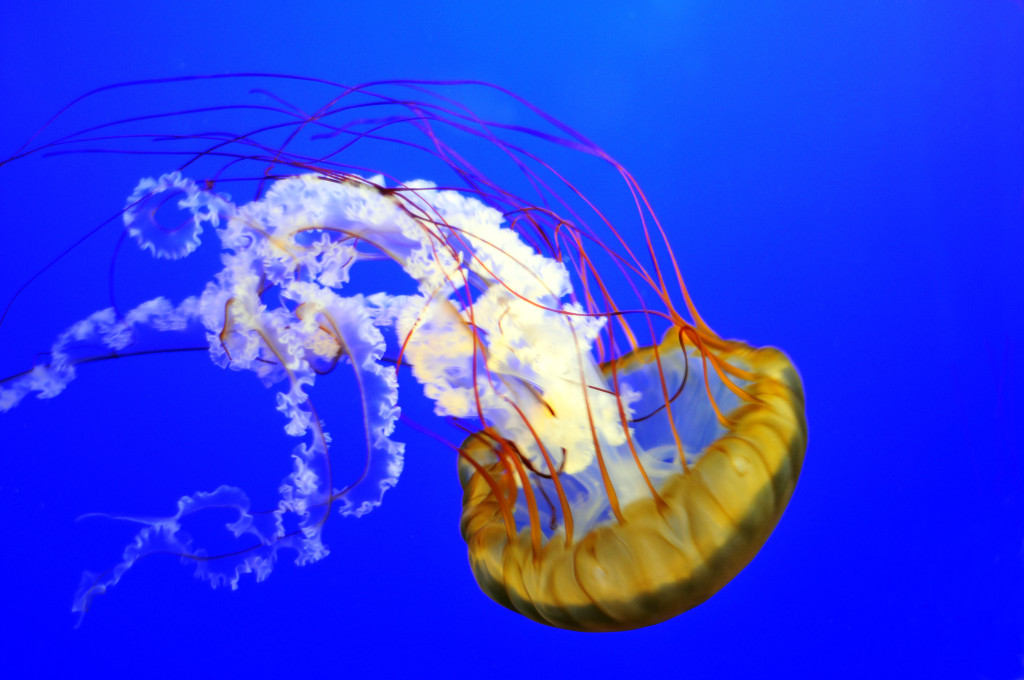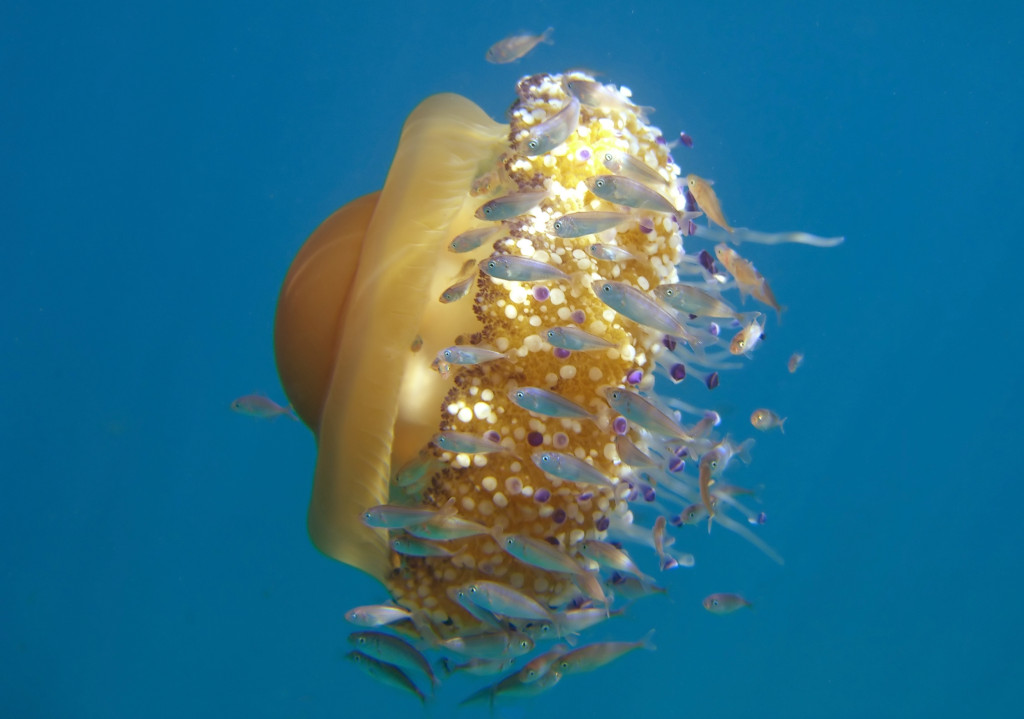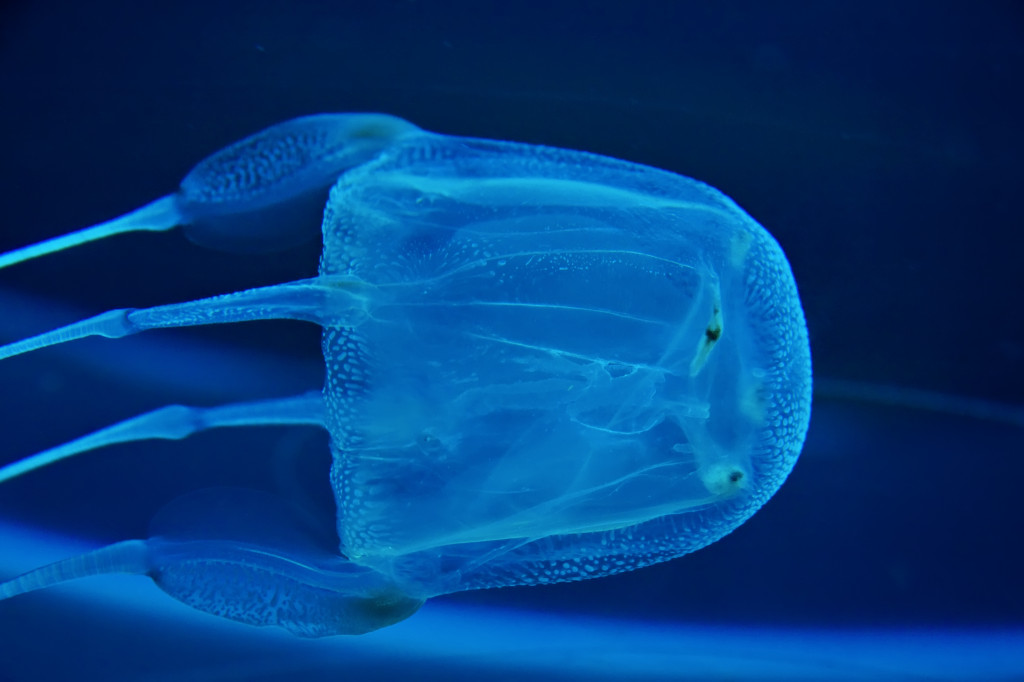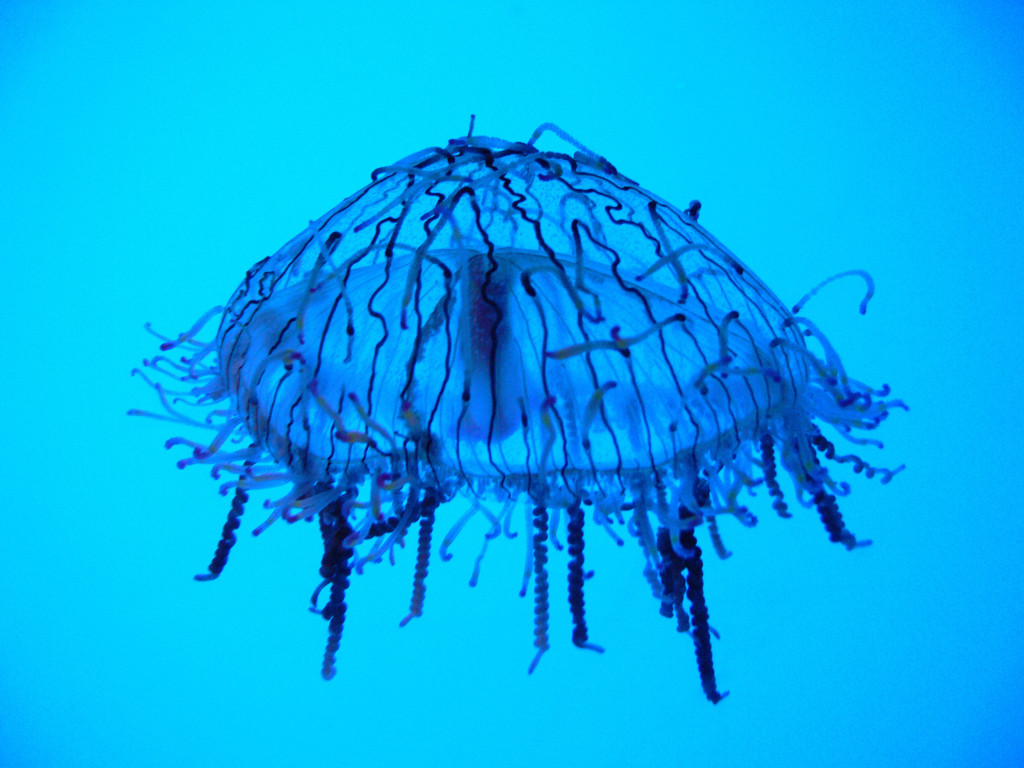Ready to take on the jellyfish?
Many people, including some divers, consider jellyfish to be just blobs of slime — annoying at best, dangerous at worst. But in fact, jellies can be some of the most beautiful creatures in the ocean, and they form an important part of the ecosystem. Consider this list the “Big 5” of the jelly world.
1. Darth Vader jellyfish
Named after the ultimate bad guy and Luke and Leia’s dad, this is one of the most recently discovered species of jelly. Shaped roughly like Vader’s helmet, this minute jelly lives in the frigid Arctic waters. It’s about the size of acorn, and lives in swarms. It has four distinct tentacles, which contain venom too weak to affect humans.
2. Lion’s mane jellyfish

From the smallest on the list to the largest in the world, the lion’s mane jelly lives in temperate waters around the globe. These jellyfish can have bodies, known as bells, ranging in diameter from 20 inches (51 cm) to over 6 feet (1.8 m). The largest ever found washed up on shore in Massachusetts Bay in 1870, and measured 7.5 feet (2.3 m) in diameter across the bell, with tentacles 121 feet (37 m) long. Their tentacles pack a fairly decent sting, but are usually harmless to humans. However, it is possible to have a severe allergic reaction to the venom if you’re predisposed for it.
3. Mediterranean jellyfish

Also known as the fried egg jellyfish, this creature actually looks like, well, a fried egg. Its bell is a semi-translucent white, with a deep orange core, giving it the appearance of an egg fried in a pan. In spite of its name, it is found many places outside of the Mediterranean, typically in cooler, non-tropical waters. It grows to impressive sizes of up to 23 inches (60 cm), but packs only a mild sting.
4. Box jellyfish

Included not on this list for their size or beauty (though the blue box jellyfish is quite stunning), the 50 some species of box jellies get a mention for the venom they carry. The most venomous of jellyfish, their poison attacks the nervous system and heart of anyone unfortunate enough to come into contact with them. While there’s no official tally, anecdotal accounts indicate that as many as 100 people die every year after being stung (compared to around 10 from shark attacks). Various species exists around the world in tropical waters, and divers should avoid all of them.
5. Blue jellyfish

A medium-sized jelly, you can find these around the west coast of Scotland, the North Sea, and the Irish Sea. Named for its often quite vibrant blue color, it can also have a yellow tinge. It typically grows to around 6 inches (15 cm).
Missing the Portuguese man o’ war? This most famous of jellyfish is not a jelly at all, but a siphonophore. These are not single creature, but rather a colony of small creatures, each with their own specialization.
Did we leave your favorite off the list? Let us know!

